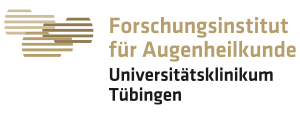Ueffing Lab
Molecular Biology of Retinal Degenerations
Home » Labs » Ueffing Lab » HOPE-2
Hereditary Retinal Disorders: From Patients Towards Therapies
HOPE-2
HOPE is a disease-specific network for rare diseases funded by the Federal Ministry of Education and Research (BMBF) in a first funding period from 2009 until 2012. The promising results of the first funding period resulted in a continuation of funding for the next 3 years (second period 2012 – 2015).
Abstract
The advanced knowledge in human genetics, the combination and correlation of multiple imaging technologies with visual function analysis, the direct accessibility of the neuroretina for non-invasive electrophysiological and imaging technologies and the immune-privileged status of the eye favour the development of conceptually new diagnosis and therapy in the next few years. Research of the HOPE project focuses on hereditary retinal disorders (HRDs), a heterogeneous group of mostly rare ocular diseases for which no effective cure is currently available. The pathology affects the photoreceptors, the retinal pigment epithelium and/or the processing and transmitting first order neurons. Approximately 30.000 people in Germany are affected. Blindness results in loss of life quality, high risks for accidental injury and tremendous socio-economic costs.
Following aims will be realized within this project:
- Improving and advancing the clinical and genetic diagnostics of HRDs
- Unravelling the genetic complexity of HRDs
- Identification and validation of neuroprotective substances and development of a suitable delivery system for treatment of HRDS
Project Collaborators
- Subproject 1: Prof. Eberhart Zrenner, PI, Center for Ophthalmic Research, Tübingen, Germany
- Subproject 2: Prof. Mathias W. Seeliger, PI; Dr. Regine Mühlfriedel, Co-Investigator, Center for Ophthalmic Research, Tübingen, Germany
- Prof. Uwe Wolfrum, Co-Investigator, Johannes Gutenberg University of Mainz
- Subproject 3: Prof. Bernhard Weber, PI, University of Regensburg, Institute of Human Genetics, Germany
- Subproject 4: Prof. Bernd Wissinger, PI; Dr. Susanne Kohl, Co-Investigator, Center for Ophthalmic Research, Tübingen, Germany
- Subproject 5: Prof. Marius Ueffing, PI, Center for Ophthalmic Research, Tübingen, Germany
- Dr. Stefanie Hauck, Co-Investigator, Helmholtz Zentrum Munich, German Research Center for Environmental Health (GmbH), Neuherberg, Germany
- Subproject 6: Dr. Christine Wallrapp, PI, CellMed AG, Alzenau, Germany
- Subproject 7: Dr. Thomas H. Wheeler-Schilling PI, Center for Ophthalmic Research, Tübingen, Germany
- Franz Badura, Co-Investigator, PRO RETINA-Stiftung
Scientists in Ueffing Lab
Dr. med. Blanca Arango-Gonzalez
Related Publications
- Schatz A, Arango-Gonzalez B, Fischer D, Enderle H, Bolz S, Röck T, Naycheva L, Grimm C, Messias A, Zrenner E, Bartz-Schmidt KU, Willmann G, Gekeler F. Transcorneal electrical stimulation shows neuroprotective effects in retinas of light-exposed rats. Invest Ophthalmol Vis Sci. 2012 Aug 15;53(9):5552-61
- Arango-Gonzalez B, Schatz A, Bolz S, Eslava-Schmalbach J, Willmann G, Zhour A, Zrenner E, Fischer MD, Gekeler F. Effects of combined ketamine-xylazine anesthesia on light-induced retinal degeneration in rats. PLoS One. 2012;7(4):e35687. Epub 2012 Apr 25.
- Trifunović D, Sahaboglu A, Kaur J, Mencl S, Zrenner E, Ueffing M, Arango-Gonzalez B, Paquet-Durand F Neuroprotective Strategies for the Treatment of Inherited Photoreceptor Degeneration. Curr Mol Med. 2012 Jun;12(5):598-612. Review.
- Willmann G, Schäferhoff K, Fischer MD, Arango-Gonzalez B, Bolz S, Naycheva L, Röck T, Bonin M, Bartz-Schmidt KU, Zrenner E, Schatz A, Gekeler F. Gene Expression Profiling of the Retina after Transcorneal Electrical Stimulation in Wildtype Brown Norway Rats. Invest Ophthalmol Vis Sci. 2011 Sep 29;52(10):7529-37. Print 2011 Sep.
- Kaur J, Mencl S, Sahaboglu A, Farinelli P, van Veen T, Zrenner E, Ekström P, Paquet-Durand F, Arango-Gonzalez B. Calpain and PARP activation during photoreceptor cell death in P23H and S334ter rhodopsin mutant rats. PLoS One. 2011;6(7):e22181. Epub 2011 Jul 12.
- Del Río P, Irmler M, Arango-González B, Favor J, Bobe C, Bartsch U, Vecino E, Beckers J, Hauck SM, Ueffing M. GDNF-induced osteopontin from Müller glial cells promotes photoreceptor survival in the Pde6b(rd1) mouse model of retinal degeneration. Glia. 2011 May;59(5):821-32. doi: 10.1002/glia.21155. Epub 2011 Feb 28.
- Arango-Gonzalez B, Szabó A, Pinzon-Duarte G, Lukáts A, Guenther E, Kohler K. In vivo and in vitro development of S- and M-cones in rat retina. Invest Ophthalmol Vis Sci. 2010 Oct;51(10):5320-7. Epub 2010 May 12.
- Arango-Gonzalez B, Cellerino A, Kohler K. (2009) Exogenous brain-derived neurotrophic factor (BDNF) reverts phenotypic changes in the retina of transgenic mice lacking the bdnf gene. Investigative Ophthalmology and Visual Science 50(3):1416-22.
- Sancho-Pelluz J, Arango-Gonzalez B, Kustermann S, Romero FJ, van Veen T, Zrenner E, Ekström P, Paquet-Durand F. (2008) Photoreceptor Cell Death Mechanisms in Inherited Retinal Degeneration. Molecular Neurobiology 38(3):253-69.

